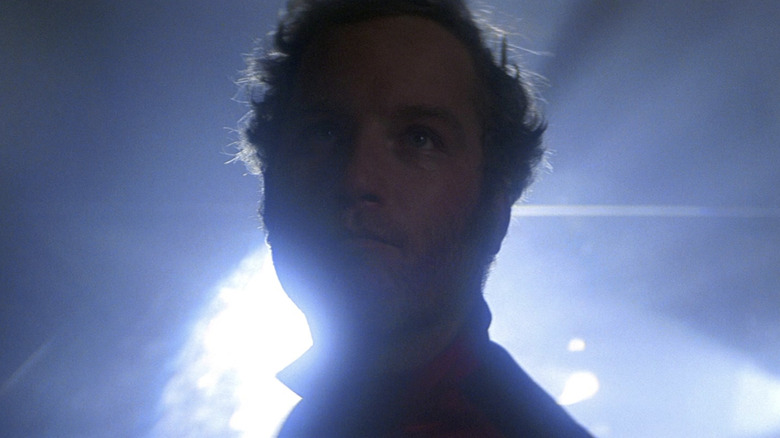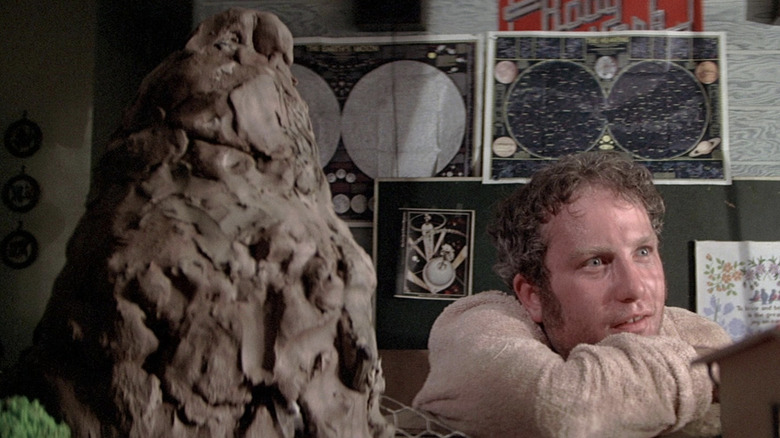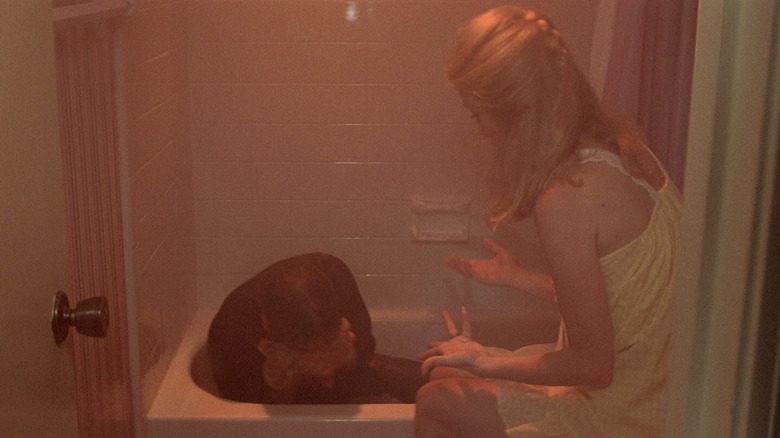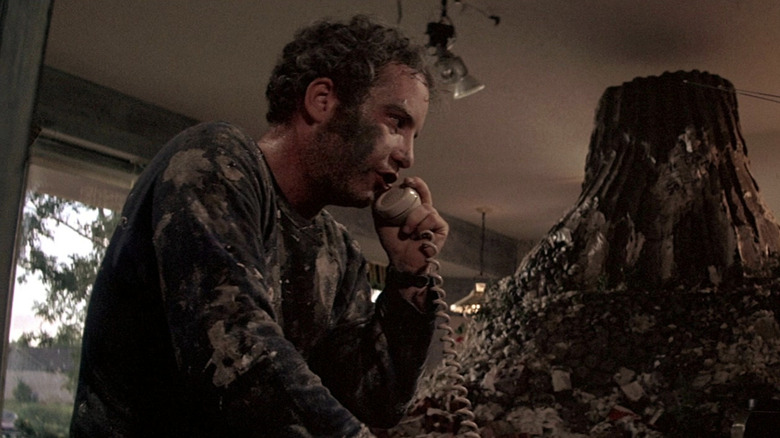The Multiple Versions Of Close Encounters Of The Third Kind, Explained
In 1975, Steven Spielberg drenched Hollywood with a bloody wave by introducing audiences to a frenzied shark in "Jaws." Today, the violent nature of Spielberg's first worldwide hit has been largely overshadowed by his more popular family-friendly films. In the 47 years since the director made audiences scared to go back in the water, most of Spielberg's movies have explored childhood wonder and imagination with awe-inspiring films about dinosaur parks, lost aliens, and badass archaeologists. However, the transition from bloody waters to the idyllic shore of a kid's imagination wasn't always a smooth one.
Following the success of "Jaws," Spielberg wrote and directed "Close Encounters of the Third Kind," a film about an average guy who witnesses a UFO sighting, experiences strange visions, and becomes obsessed with explaining it. The movie ends with the protagonist hitching a ride into the cosmos on an alien ship. With Richard Dreyfuss' star power, a compelling score by John Williams, and a mysterious alien plot, this film was another Spielberg success that displayed his ability to communicate naive wonder and curiosity. Although the film was a hit and the beginning of Spielberg's most popular style of film, he's regretted the ending for decades. In a 2005 interview with Cinema Confidential, Spielberg discussed his remorse:
"I know that 'Close Encounters,' because I wrote the script, was about a man whose insatiable curiosity and a developing obsession and a kind of psychic implantation drew him away from his family and with only looking back once, walked onto the mother ship. Now, that was before I had kids. That was 1977. So I wrote that blithely. Today, I would never have the guy leaving his family and going on the mothership."
Over the years, Spielberg has released three different versions of the film attempting to soften the blow of Neary's abandonment.
The Problem with Roy Neary
Spielberg's career is full of obsessive protagonists who are willing to throw it all away to pursue their dreams. John Hammond sinks his fortune into a doomed dinosaur theme park, Indiana Jones constantly risks life and limb for ancient treasures, and Roy Neary loses his family, his sanity, and his entire living room along his journey to uncover the truth about aliens. Neary isn't the only Spielberg character consumed by their obsessions or the only one who harms other people in pursuit of them. Hammond throws his grandkids into a highly irresponsible tourist trap, and Jones regularly steals historical artifacts from other cultures, but it's Neary's abandonment of his family that the famed director regrets the most.
In the original theatrical release, "Close Encounters of the Third Kind," Neary checks out of daily life with his wife and kids and jumps headfirst into his obsession with UFOs and aliens. His wife, Ronnie (Teri Garr), tolerates his fixation for a while until he decides to build Devil's Tower in her living room using mud and sticks, at which point she packs up the kids and leaves. Instead of working to win his family back, Neary barely reacts to their absence and continues to throw all of his attention into extraterrestrials. Eventually, Neary tracks down the aliens, hitches a ride on their spaceship, and rides off into the sky without a single thought about his wife and kids.
The original version of Neary easily detaches from his wife and two children, who have no choice but to watch as their loved one is devoured by a strange fixation. Not exactly the heroic Spielberg character audiences fall in love with, so Spielberg gave us a slightly different version of Neary's story in 1980.
1980 Special Edition
In 1980, a Special Edition of "Close Encounters of the Third Kind" was released. According to Ray Morton in his book, Close Encounter of the Third Kind: The Making of Steven Spielberg's Classic Film, this version doesn't include the sequence where Neary builds the Devil's Tower in his living room. Instead, the audience is given a scene where the Neary, overwhelmed by his fixation and frustrated by the lack of answers, locks himself in the bathroom and breaks down. His wife breaks in, sees the state of him, and leaves with the kids.
This version could put Neary's obsession in a new light for some viewers. He's falling apart in the shower instead of gleefully making mud towers in the family room, which hints at the fact that his newfound fixation is hurting him too and that it isn't something he can control. This reframes his quest as an addiction that he can't break free from instead of a conscious choice he makes to devastate his family. Even if this scene makes certain viewers empathize with Neary, it probably disappears when Neary, yet again, boards the mothership and leaves Earth. Even after he finds answers to the questions that have plagued him, he still chooses to abandon his family.
The most controversial thing about this cut was the fact that it included a scene of the mothership's interior. The general consensus of this sequence seems to be that you either love it or hate it. Some fans enjoyed the glimpse into alien technology, while others believed it was better left a mystery.
This version earns momentary sympathy for Neary and offers a fleeting glimpse into a mothership, but it doesn't change the fact that the protagonist takes off on his family.
1998 Director's Cut
In 1998, another version of the classic was released, and the Devil's Tower regained its rightful place in Neary's living room. This version was closer to the original theatrical release, which included all of Neary's obsessive antics, and the bathroom breakdown, without the controversial glimpse into the spaceship. The fact that this cut includes the bathroom breakdown and Neary's living room tower makes this version the most interesting because the audience gets to see how the obsession affects everyone in the family. Neary is plagued by unanswered questions, his wife is frightened by the obsession, and his children are traumatized by the dissolution of their family. This version offers every side of the story, but none of them are a good look for Neary. No matter what changes Spielberg makes to the beginning or the middle, Neary still abandons his family in the end.
Like John Hammond and Indiana Jones, Roy Neary pursues his desires no matter what it costs others, even his family. It's understandable that Spielberg cringes at the abandonment ending, but riding off into space is Neary's dream, and Spielberg, like Hollywood itself, is in the business of making dreams come true.



